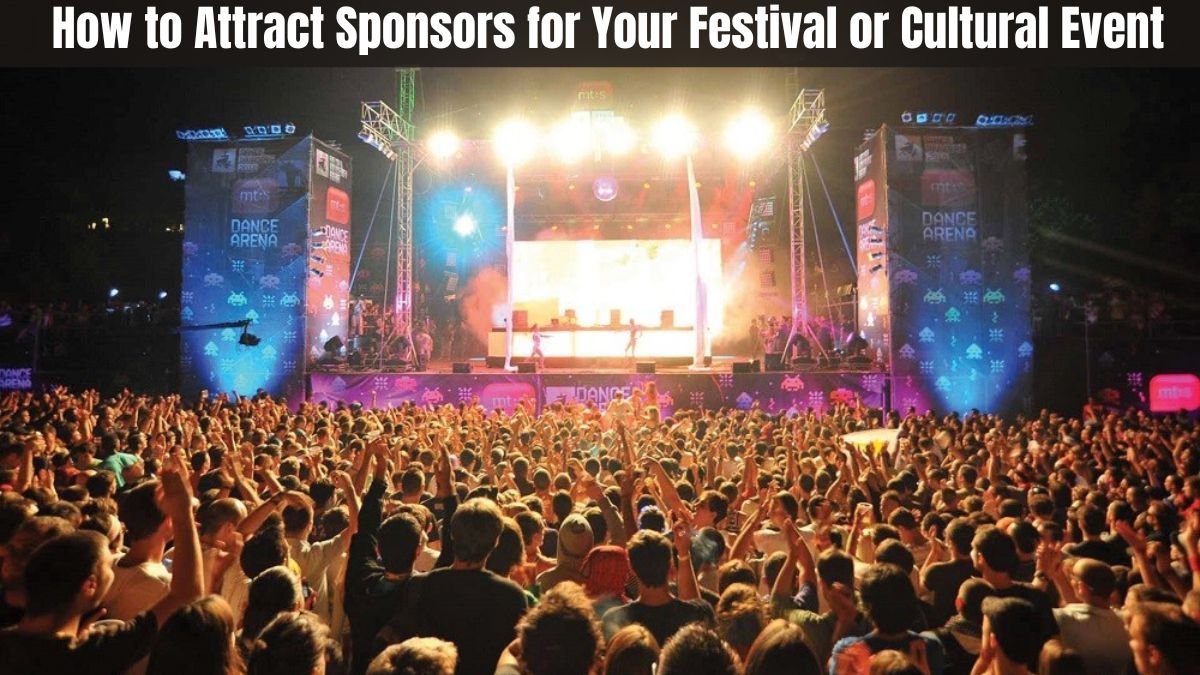Cultural events and festivals are an important part of any community’s life. These events not only connect people but also keep local art, music, dance, and traditions alive. However, sponsor support is essential to successfully organize these events. Sponsors not only provide financial support but also enhance the event’s credibility and reach.
In this article, we will discuss in detail how you can effectively attract sponsors for your festival or cultural event and motivate them to be a part of your event.
Establish a Clear Vision and Mission for Your Event
The first step to successful sponsorship is to establish a clear vision and mission for your festival or event. Sponsors always want to invest in events that have a clear purpose and help them achieve their brand image and marketing goals.
For example:
- If your event promotes local artists, it could be presented to sponsors as “preserving local art and culture.”
- If it’s a food festival, it could be marketed as “an experience that connects healthy food and community.”
- Tip: Briefly write your event’s vision and mission on a single page and share it with potential sponsors.
Identify Target Sponsors
- Prioritize sponsors who match your event’s purpose and audience, not just those who provide financial support.
- For example, if your event is for a younger audience, tech companies and educational institutions could be your key sponsors.
- Local food and beverage companies can also support local food festivals.
- Tip: Create a list that includes the names of potential sponsors, their key branding activities, and previous sponsorship experience.
Prepare a Sponsor Package
A sponsorship package is the most important part of your event’s offering. This package clearly outlines what the sponsor will receive and what kind of benefits they will receive in return for their investment.
Sponsorship packages may include:
- Branding opportunities: Displaying the sponsor’s logo on banners, posters, social media posts, and the event’s website.
- Celebrity and publicity: Including the sponsor’s name in local media and press releases.
- Stall or booth: Showcasing the sponsor’s product or service at the event.
- Special sponsor recognition: A special thank you to the sponsor at the opening ceremony or awards ceremony.
- Tip: Create different levels of packages – Gold, Silver, and Bronze – so sponsors can choose according to their capacity and budget.
Prepare a Professional Proposal
An effective sponsorship proposal should be professional and compelling. This proposal should include the following elements:
- Event name, date, and location
- Objective and mission statement
- Target audience and their profile
- Detailed description and key highlights of the event
- Benefits to the sponsor
- Success and media coverage of previous events (if available)
- Tip: Present the proposal simply, clearly, and with visual elements. Using infographics and photos can make your proposal attractive.
Personal Contact and Networking
- The most effective way to reach sponsors is through personal contact and networking.
- Start with emails and phone calls, but try to meet them directly.
- Participate in the local business community, chamber of commerce, or trade fairs.
- Present the purpose and benefits of your event directly and clearly.
- Tip: When networking, tell the sponsor not only about the benefits, but also the story and social impact of your event. This connects them emotionally.
Use of Digital and Social Media
- In today’s digital age, social media and online platforms are a powerful way to attract sponsors.
- Social Media Promotion: Promote the event on Facebook, Instagram, and Twitter.
- Website and Blog: Create a dedicated event page and showcase photos and videos from past events.
- Email Newsletter: Send updates to potential sponsors and encourage them to join the event.
- Tip: Plan ahead to showcase the sponsor’s name and logo on digital platforms. This provides them with future promotional opportunities.
Building Transparency and Trust
- Sponsors invest when they are confident that their funds will be used appropriately and their brand will be protected.
- Budget and Expense Clarity: Show the sponsor how much of their investment will be spent on which activities.
- Progress Reports: Provide regular updates to the sponsor regarding the progress of event planning and preparation.
- Transparency: Share any issues or changes promptly.
- Tip: Build a trusting and long-lasting relationship with the sponsor.
Showcase Past Experience and Success
- If you’ve organized events before, showcase the success and achievements of previous events to sponsors.
- Attendees’ Numbers and Profiles
- Media Coverage and Promotional Materials
- Experience and Feedback from Previous Sponsors
- Tip: Make your presentation more impactful by using statistics and photos/videos.
Creative and Unique Proposals
- These days, sponsors receive proposals from numerous events. Therefore, creative and unique ideas can attract their attention.
- Interactive stalls or experiential activities
- Live social media branding
- Special in-festival promotions for the sponsor’s products or services
Tip: Show the sponsor how your event can help their marketing strategy.
Thank You and Evaluation
- After the event concludes, it’s crucial to send thanks and feedback to sponsors.
- Thank You Letters and Emails
- Photo and Video Reports
- Information about the results and reach of their investment
- This step helps secure long-term collaborations and attract new sponsors in the future.
Conclusion
A successful festival or cultural event depends not only on the beauty and entertainment of the event, but also on a strategy to attract the right sponsors.
By adopting all of these strategies, you can not only attract sponsors but also make your event successful and memorable.
